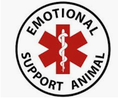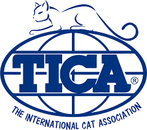 What is Taurine and why do Bengals need it? Taurine supports healthy heart rhythm, liver function and healthy vision in Bengals. Taurine is an amino acid that occurs naturally in the cats body’s. It is particularly concentrated in the brain, eyes, heart and muscles but Bengals in particular do not produce enough of this essential amino acid. Taurine is an important part of the feline diet and is essential in preventing a disorder in cats called "dilated cardiomyopathy" (which is a failure of the heart muscle), as well as being very significant in helping feline reproduction and prevention of a progressive retinal disease called "feline central retinal degeneration" which causes blindness if left untreated. In breeding queens that have taurine-deficient diets, there are more stillbirths, fewer live kittens born, and ultimately fewer kittens that survive to the weaning stage. Despite the common belief, Taurine is not extracted from bull urine or bull semen. The name is derived from the Latin word Taurus, which means ox or bull. That may be the source of the confusion. In the wild, rodents are a large part of the Bengals diet and the rodents have significant levels of taurine in their brains and organs. Bengals requires higher level of protein, calcium, and Taurine than most other breeds. Choosing quality foods and supplements is very important for their health. There are many choices to be made and many factors affecting them and often not only one right answer. There are a number of quality dry foods available on the market, Remember you get what you pay for in the foods that you buy. Foods that we recommend are Royal Canin, Instinct limited ingredient, Crave, Grain Free. Although it is controversial some Bengal owners choose to feed raw diets or partial raw diets and we at Bengaltime cattery feed a partial raw diet to our Bengals. Some choose to make their own meat mixtures using recipes available online and we have one on our webpage at this link - (https://registeredbengals.com/products.html) It is about 1/2 way down the page under Homemade cat food recipe. We however do not have time to make our own food and choose to buy ours from Raw Paws. We have been Very happy with the quality and service of the team at Raw Paws! There are several other quality Raw cat food companies and we have links to them on our site as well. There are a number of Facebook groups dedicated to Raw food diets. They have recipes for making your own Raw food at home as well We keep a couple of food supplements around the house for our cats and Bengal Kittens, Acidophilus, and Nu-Vet Plus for cats. Bengals need higher levels of calcium and Taurine. Nu-Vet Plus is a great source of calcium and Taurine for your Bengal. The Acidophilus is good for digestive issues and diarrhea which happens from time to time and especially in kittens whose immune systems are still developing. NOTE: We are NOT veterinarians, our experience comes from first hand knowledge raising and breeding Bengals as well as from online research.
Make your own informed decisions about the health of your Bengals. Your friends at Bengaltime Cattery Registeredbengals.com
0 Comments
We are Registered Bengals / Bengaltime Cattery and we spent weeks researching whether or not to put flea collars on our Pregnant Bengal Queens. We are NOT veterinarians and have no specific training in this BUT we do breed Purebred Bengals and have an interest in Healthy Bengal kittens.
Prior to using these collars we tried several natural flea treatments and collars that did almost nothing and in one case actually seemed to attract fleas to our cats. The dangers of a flea infestation on small kittens are well known so it was with that in mind that we decided not to remove our Seresto 8 month flea collars from our Bengal Queens during their pregnancy. Just in case we did remove the collars for the first week of the kittens lives but then replaced them. We DID NOT put new collars on our Girls and the ones they had on were about Three months old. We had have had no issues and the kittens are all healthy and happy with No fleas. We can not recommend that anyone else follow our example but share this so that others that are looking for the same information that we were looking for might be able to decide for themselves how to proceed. Prior to using the Seresto collars we had used the one time per month Bayer Advantage Flea Treatments which work very well but since this puts the active ingredients into the cats systems we were not comfortable with this while our Girls were pregnant and or lactating. To follow the progress of our Kittens or queens you can visit our youtube channel or our Web Page. Our Two Bengal Queens, Lisa and Julie had 11 Healthy, Happy kittens that are developing nicely. It is our plan to keep these collars on all of our adult Bengals and Kittens over 10 Weeks old at all times moving forward. 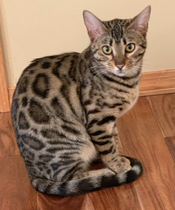 Are you aware of and up to the responsibilities of being a Bengal owner? There are many aspects that potential cat owners need to consider before acquiring a Bengal cat or kitten. Bengals have their own unique personalities and health care needs. Bengals are becoming more and more popular among cat fanciers and for good reason. Bengals offer the best characteristics of cats with a few dog traits thrown in. The Bengal is one of the most exotic breeds of cat that you will ever come across. The uniqueness of their breed lies within their blended bloodlines giving you an animal like no other. The Bengal cat is a cross between a domestic cat and an Asian leopard cat. The blend of these two bloodlines created a mix that is hard to match in any other breed of cat. Bengals were recognised by The International Cat Association (TICA) in 1983 and finally received full championship status in 2005. Bengals are a beautiful and muscular breed. They make excellent pets and are thought by many to be Hypoallergenic. Meaning that if you are allergic to cats you are less likely to be allergic to this particular species. Because of the leopard like appearance many people associate them with Wild cats but they are generally very social and adapt well to home life, provided they are kept stimulated. Every Bengal is an individual but in general Bengals make excellent house pets and get along well with other pets in the home. They are best suited to homes with older children that will enjoy playing with them. See also Bengal Cat Standards and Behavior. Bengal Cat’s personality: Bengal cats are very loving, loyal and a dedicated part of the family unit as they possess a good temperament with children. They are commonly very playful and enjoy interaction with people on a regular basis to show off their mischievous nature. With an instinctive love of water they are often found drinking from taps or other water sources in the home, so keeping toilet lids down is advised. They love to interact and play with other cats and dogs and are generally very talkative! How much exercise do Bengal Cat need: Bengals are a very active, inquisitive and intelligent breed. They love jumping on people, worktops, and love heights! They like to get involved with the daily lives of the family and love sticking their nose or paw into anything going on in the house. Unrolling toilet rolls and learning to turn on faucets are common Bengal activities. They also don’t like being left of their own for long – so if you work all day and do not have other pets or children for them to play with, it’s best to get two so they can keep each other entertained. Potential Bengal Cat health problems: Bengal cats are generally strong and hardy, however, they do have some known health problems, Reputable breeders screen for these issues so provided that you work with a good breeder they should not be an issue for you. See Bengal Cat Health Bengal Cat Traits: Size: The average size of Adult Bengals is about the same as most other cat breeds with adult males weighing slightly more than adult females. In general an adult Bengal will weigh between 10 and 14 pounds. Life Span: When fed properly and kept up to date with vet checks and activity levels, you can expect your Bengal cat to live a long and happy life of 15 to 18 years or more. Shedding / Hypoallergenic: Because they have a more dense Pelt versus a normal cats fur the bengal cat sheds very little in comparison to other cat breeds. In addition Bengals are one of just a few cat breeds that are Hypoallergenic. Meaning they are less likely to cause an allergic reaction in people who are allergic to cats. Coat Colors and Patterns: Bengals come in a variety of coat colors and patterns and you can find an excellent resource at this link on most of them. In general the most popular color is the brown Rosetted. Bengals come in shades of brown, silver, charcoal and a few colors in between with a few different patterns. Everyone has their own favorite look but in general the wild tiger look is what draws people to this breed. Does the Bengal breed fit your lifestyle?
When properly socialized Bengals will get along with other house pets and can be part of a multi pet household. The key is in the introductions to others as a kitten, this is one of the BIG reasons that it is important to find Bengal kitten breeders that spend the time with their kittens to socialize them. Bengals and Children: Just as in humans, every Bengal is different but in general Bengals are good with other members of the family and children. This again goes back to how the breeder socialized the kittens. If the breeder says the kittens are shy, it is a sure sign that they have not spent enough time interacting with them. If possible visit the breeder and spend time with the kitten before you buy one. Pick the one that seems to be the least shy and wants your company or wants to play. Ease of training: Unlike other cat breeds, Bengals are able and willing in most cases to be trained and are willing to accept commands from their owners. Bengals can be trained to walk on a leash which is VERY rare in the cat world. Prepare for a few strange looks... Because of the popularity of Bengal cats you should NEVER allow your Bengal to go outside without you. It is likely to end up as someone else's pet. Most Registered Bengal Breeders will have a microchip implanted in the kitten. It is about the size of a grain of rice and can easily be scanned by vets during visits or by animal control if they were to find your cat so that it can be returned to the proper owner Biting: Bengals do not bite any more or less than any other cat breed and in general will only bite if they are in danger. Playful nips during play are common and rarely do any harm. Vocalization: Bengals tend to speak more than many other cat breeds and will let you know if they need or want something. Intelligence: Bengal cats are one of the most intelligent of the cat breeds, Knowing this it is easy to understand why they are more vocal than most other breeds. If they are vocalizing they are in many cases trying to communicate with you or let you know they are displeased about something Affection: Bengal cats love to cuddle and will show their owners affection. They will bond with their owners and show lots of love. BUT if you try to force a bengal to cuddle you are likely to get a hiss or even possibly a scratch. You can't force love... Every Bengal will be different in the amount of handling and cuddling that they want and need. Kids: Great! Bengals love kids and enjoy their high levels of energy. All of our Bengals have been socialized with some very energetic, grabby and loud children so they will be familiar with most behaviours that children do. Just remember that children need to be coached on how to approach a kitten and how to be gentle. Dogs: Great! With all other pets make sure that they are gradually introduced and have an opportunity to get familiar with each other’s scents before they physically meet. Bengals can actually bond with dogs and become great friends. Water play: Some Bengals especially love to get in the shower or play in the tub. A fountain with running water such as commercially available cat drinking fountains can provide a lot of fun for your Bengal . Sometimes they may take a toy and drop it in the water as if to see if it is playing dead. Or they may take a paw and dig beside the fountain as though they are digging up water… It's all lots of fun to watch! You wouldn’t believe that a cat could like water so much. Most Bengals love to splash and play with water. Running water from a sink or a fountain is a blast to play with. Watch your toilet (especially if you use cleaning agents like bleach) and running hot water. It’s rare, but some Bengals have also been known to swim or to shower with their owners! Summary: When purchased from the right breeder and properly socialized as kittens, Bengals make excellent pets and companions. The key is finding the right breeder. Shop carefully and use the checklist provided at this link as a guide in making your decision. (Breeder Checklist). For more Bengal related content and information or to find your purrfect Bengal kitten or Bengal Related Products, visit us at RegisteredBengals.com Have you got a Bengal Cat? Have you got advice for anyone considering getting one? Let us know in the comments below… "If it's not a Bengal, It's just a cat" If you have one, You know it's true...  Cats are obligate carnivores. They are intended to eat a diet of birds, Lizards and small mammals and the structure of their teeth and jaws tells the tale. All of the teeth, not just the incisors and canines, or cat-nines as they are called, are pointy. The molars, which are flat for grinding food in herbivores and omnivores, are even sharp and pointy in cats. Also, the jaw has no ability for side to side grinding motions. In nature, when a cat, whether domestic or Bengal eats prey, the function of the teeth and jaws is to tear the prey into bite sized pieces that are then swallowed. In this process, the muscle tissue, connective tissue, fur and feathers slides between the teeth, essentially cleaning and flossing the teeth as the cat consumes the meal which is, very low in carbohydrates. Dry cat food does not keep a cat’s teeth clean. Many times, when a Veterinarian opens the mouth of a cat during routine examination they find a mouth full of gingivitis, tartar, lesions and exposed sensitive areas of the teeth. (See "Feeding your Bengal a Raw Diet) Dental disease can also affect a cat’s overall health: Infections and inflammation resulting from dental infections can cause inflammation in the blood vessels. These blood vessels fan out into fine little networks in internal organs such as the kidneys. The inflammation in these blood vessels can contribute to kidney disease as your cat ages. Syndromes such as Type 2 Diabetes can also be impossible to resolve until the diseased teeth are removed from the mouth. Many times cat owners say after diseased teeth have been extracted from their cat that they didn’t realize how much trouble the diseased teeth were causing until after they were removed, and they got their “old” cat back who was once again playful, responsive, and doing old habits and routines. Sometimes seemingly unrelated skin infections resolved as well. Diseased teeth place a burden on the cats the immune system. Many times the cat owner says , I feed dry / kibble diet!. How could this be? Dry Kibble does not clean a cat’s teeth, and it is high in carbohydrates as well. Canned diets do not clean the cat’s teeth either, nor does mush raw diet, but at least these it is low in carbohydrates. There are ways to help your cat’s teeth. (See "Feeding your Bengal a Raw Diet) If your cat will tear at a piece of meat on a regular basis this can help. The gold standard is for you to brush your cat’s teeth. But please reserve judgement until after you look at the dental video produced by Cornell University. It outlines steps to help your cat find tooth brushing acceptable or even a good thing. Regular tooth brushing can greatly impact your cat’s oral health and overall health. Regular brushing can also increase the time between necessary scaling and polishing and prevent the need for surgical tooth extractions. Dental scaling and polishing is still important to your cats overall health. Scaling and polishing removes the plaque buildup on the tooth surface and with high quality dental instruments, below the gum line. Eighty Percent of dental disease begins below the gumline. You can't see this though there may be a clue in the form of gingivitis or a red line along the gumline. Proper diet can lengthen the interval between necessary scaling and polishing. And the closer the diet replicates the diet found in nature, the less dental care your Bengal will need. Many breeders and pet owners report healthier, happier cats as a result of proper Raw feeding. Cats are not built for a dry kibble diet. For more Bengal information and resources visit us at this link. "If it's not a Bengal, It's just a cat" 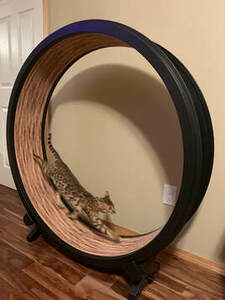 Some of the main differences between a Bengal and a domestic cat is their energy level, curiosity and need for stimulation. Bengals love to run and play and especially to climb up high. A tall scratching post especially with perches at the top is a very good addition to a home with a Bengal . There are also wall shelves and climbing toys, many of which are available on Amazon. A cat wheel such as the one made by one fast cat will help your Bengal get most of the exercise that they need. With very little training they usually take right to it! It's so much fun to watch them walking and running full speed on the wheel. We find the exercise wheel made by one fast cat to be a nice quiet wheel relative to others we have purchased and it literally took less than Ten minutes of play with our Bengal Girls to get them up and running. From there it is just a matter of any new Kitten or cat watching others play and on and on it goes with no further training required in many cases. Toys: Feather toys or wand string feather toy combinations are great for Bengals. With the flick of your wrist you can give your kitty a lot of exercise! Cats prefer many short episodes of play a day, but a Bengal can go for quite a while! Two Kittens: The absolute best way to insure that your Bengal kitten or cat gets the exercise that they want and need is to get them in Pairs, We have an entire article on why this is a good idea. at this link but in short getting two kittens or cats at the same time and especially related pairs that have grown up together solves many issues and especially gives your new kittys endless hours of play and exercise time as they play together, jump on each other and more. If you have ever bought two cats from the same litter at the same time, you know exactly what I'm talking about. Of course getting two kittens may not be the right choice for everyone. Water play: Some Bengals especially love to get in the shower or play in the tub. A fountain with running water such as commercially available cat drinking fountains can provide a lot of fun for your Bengal . Sometimes they may take a toy and drop it in the water as if to see if it is playing dead. Or they may take a paw and dig beside the fountain as though they are digging up water… It's all lots of fun to watch! Taking walks outside on a harness is excellent stimulation as well as exercise. Starting young with a well fit harness goes a long way to enhance your fun and relationship with your Bengal cat. It does take a little work to get them used to the harness but it's worth the effort. To summarize if you want to avoid a fat cat or one that looks for ways to get into trouble to burn off excess energy it's time well spent to find a way for your Bengal to get the exercise that it wants and needs. For more bengal related news and information visit us at RegisteredBengals.com "If it's not a Bengal, It's just a cat" 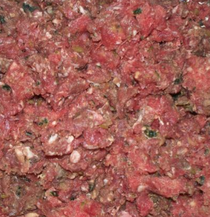 Are Raw food diets good for Bengals? Everyone knows that proper nutrition is essential to a cat's well-being. Choosing the right food can be hard, especially when we have to worry about the ingredients in commercial pet foods and pet food recalls. Some owners choose to feed their cats home-prepared diets, so they know exactly what is in the cat food. Other owners choose a Raw diet. What Is a Raw Diet for Bengals? Feeding cats a Raw diet means feeding them uncooked animal muscle meat, organ meat, and bones. This type of food is sometimes called the BARF diet, which stands for "bones and raw food" or " biologically-appropriate raw food." The ideal Raw diet is prepared based on a carefully designed recipe. Many cat owners choose to prepare these diets themselves, but commercial forms are also available. If you choose to feed your cat a raw diet, it should be one that has been determined complete and balanced. A biologically appropriate raw diet is the closest thing to what your cat’s ancestors would have eaten in the wild. By feeding your cat the way nature intended, you fuel a happy, healthy, vibrant lifestyle for years to come. Why Consider feeding a Raw diet? Bengals are obligate carnivores. In short, this means they must eat meat to survive. Cats do not actually need vegetables and carbohydrates in their diets. In fact, they can only tolerate carbohydrates in small amounts. Instead, cats thrive on high-protein, high-moisture diets rich in substances only found in meat. This includes amino acids like taurine, fatty acids, and other essential vitamins and minerals. Supporters of Raw food diets believe that cooking meat alters or decreases these vital substances. They advocate for a biologically-appropriate diet that closely mimics what a cat would eat in the wild. In general, small wild cats hunt and eat rodents and other small mammals, birds, fish, insects, and even reptiles. When it comes to feeding your own cat raw food, the idea is to create a diet that is similar. There is some controversy revolving around raw food diets for pets. Those who support raw food diets have much to say about the health benefits:
While these claims tend to ring true, the opposition has valid concerns about the safety of Raw food diets. Are Raw Food Diets Safe? It is important to know that feeding raw food to your cat comes with some risks. Raw food may contain pathogens like Salmonella and E. coli that can lead to serious life-threatening infections. Cooking food removes most of these pathogens, which is why we humans cook our food. Cats can digest raw foods better than humans, because they have shorter, more acidic digestive tracts. Many pathogens will pass through a cat without causing any issues. However, not all cats can tolerate raw food. Perhaps the greatest risk of feeding and handling raw meat comes down to cross-contamination. Feeding your cat a raw food diet can expose you and other people in your home to dangerous pathogens. Pathogens can remain on preparation surfaces, food dishes, in cat fecal matter and even on your cat (especially around the face). Raw diets should not be fed to cats living in homes with immune-compromised individuals. They should also be avoided in households with young children and/or elderly people. While it's impossible to eliminate all risk, there are some ways to try to be safer when feeding a raw food diet to your cat:
Bones are a safety concern when it comes to Raw food diets. Small whole bones or pieces of bones can cause complications such as gastrointestinal obstructions, oral injuries, and airway obstructions. If animal bones are included in your cat's Raw food diet, they should be ground up thoroughly. Complete and Balanced Raw Food Diets: One of the biggest mistakes owners make with Raw food diets is not making sure the diet is complete and balanced. Some people just feed "all meat and bones" or a wide variety of meats without actually paying attention to the calorie, fat, protein, and nutrient content. Don't assume your cat is getting everything needed for good health by simply feeding "as much meat as desired." Over time, an incomplete diet can lead to serious health problems for your cat. When developing your cat's raw diet, consult with your veterinarian about recipes that offer complete and balanced nutrition for your cat. Know that many vets will not recommend raw diets due to the risks involved. If you feel strongly about trying a raw diet and your vet is not flexible at all about raw diets, seek out a veterinarian who is experienced with raw diets. Better yet, find a veterinary nutritionist. It is essential that you find an expert to help you develop a complete and balanced diet that will truly benefit your cat. Your vet may also recommend special supplements to ensure your cat gets the nutrients needed to stay healthy. Ingredients used in a raw food diet may include the following:
You will need the following equipment to prepare the raw diet: If you choose to prepare your Raw diet yourself, you will need the items below.
Preparing a Raw diet at home can be a bit time-consuming, so most owners prefer to make enough to last several weeks and keep it frozen. If you are not able to take the time to develop recipes and prepare raw food at home, you may wish to try one of the many commercial Raw diets available. Raw diet supporters often consider commercial raw diets inferior to those prepared at home. However, they are healthier than feeding kibble. Commercial Raw diets are usually frozen or freeze-dried to minimize pathogens. Remember that safe-handling precautions should still be taken with these diets to prevent cross-contamination. Ask your veterinarian or veterinary nutritionist for help finding the right commercial diet. Make sure it is complete and balanced. Summary: Bengals need a diet composed primarily of meat. Switching to a Raw cat food can greatly improve your cat’s health by avoiding many of the problems associated with poor nutrition such as hydration imbalances, kidney disease and crystals and urinary tract infections. Cats are obligate carnivores, meaning they have nutritional requirements that can only be met with a diet based almost entirely on animal tissue. Their bodies don’t produce the enzymes required to digest carbohydrates. When you switch to a Raw Food you’ll notice:
How much Raw should be fed: The general rule of thumb for the amount to feed adult cats, either in Raw food or canned food, is to feed 2 to 4% of the cat's ideal body weight per day. For an inactive and/or older cat the 2% amount might be good and for a very active and/or younger cat, 4% might be closer to what's needed. For more Bengal Raw feeding information and resources please consider these vendors: Hare today for your Raw Diet - Hare-today.com Nu-Vet plus for supplements Nuvet.com Registered Bengals - Products Page - For other Bengal related products and resources.
Pyometra is an infection in the uterus. Pyometra is considered a serious and life threatening condition that must be treated quickly and aggressively. All cats being treated for pyometra should immediately begin antibiotic therapy.
Causes of Pyometra? The Latin word “pyo” means pus and “metra” is the uterus, so pyometra is essentially an infected uterus. It’s caused by the growth of E.coli bacteria in the lining of the uterus over time, which originally travel up from the animal’s vulva when it is open during heat. With many Breeds of cats you can allow them to cycle in and out of heat a few times before allowing them to mate, thus allowing for breaks between litters. These breaks allow for a Queen to regain a good weight and replenish the body. However, the Bengal Breed must be treated differently than most cat breeds. This is because the Bengal Breed has a more intense and harsher heat cycle that will deplete energy stores and lasts much longer if not bred. In addition, when females are in heat their cervix will dilate to allow entry for the male's sperm. This dilation also leaves the uterus vulnerable to opportunistic bacteria to move in that normally peacefully coexist within the vaginal walls. With most Breeds, the heat cycle is short and the window of opportunity for uterine infection is minimized. With a longer heat cycle, Bengals inherently are much more susceptible to Pyometra. Successful matings will decrease the normally harsh and long heat cycle of a Bengal and minimize the chances of getting Pyometra. It is because of this difference in the Bengal Breed that the best policy is to neuter your female Bengal unless you plan to breed her. if you do plan to breed her, Breed her when she comes into heat and do not miss heat cycles. The exception is that in general Bengals should not be bred until they are at least one year old unless they have had at least two heat cycles or have long and repeated heat cycles. Breeding Bengals Require Higher Nutrition: Breeding Bengals require higher nutrition and supplements to alleviate the stress of more litters and should also be retired sooner than other cat Breeds. A famous breeder Marianne of WildStyle Bengals used to be known for Breeding exotic Persians. She bred this Breed for over 20 years allowing for breaks in between litters. When she transitioned to the Bengal Breed and tried to use this same policy, many of her Queens came down with Pyometra. She had to learn the hard way that the Bengal Breed requires a different Breeding routine. Signs of Pyometra Symptoms of pyometra include the animal feeling unwell, such as vomiting, refusal to eat, lethargy, increased thirst and frequent urination. She may also appear to be uncomfortable. Types of Pyometra Infection: Cats can get one of two different types of pyometra infection. The first is an open pyometra, which means the cervix stays open and the infection is able to drain out. In a closed pyometra, however, the contents of the uterus aren’t able to escape and they can become toxic. A closed pyometra in cats is harder to diagnose and generally makes the animal more severely ill than an open one. If your cat has an open pyometra there may be a foul-smelling, white- or green-colored discharge coming from her vagina, which is the infected pus draining out. If she shows symptoms of a bloated or swollen abdomen without a discharge, she could have a closed pyometra infection. By the time you see any of these external signs, however, the condition is in a fairly advanced stage, so you’ll need to get medical attention right away. What the Vet Will Do: The first thing your vet will do if he or she suspects pyometra is to examine your pet’s belly. An ultrasound is a useful, non-invasive method of checking whether a swollen abdomen is caused by infection and not by pregnancy. Your vet will take a sample of the discharge for testing, to determine what type of bacteria is causing the infection. Depending on how ill the pet is, she might need to stay overnight in the hospital for treatment. Treating Pyometra with Surgery: The most common treatment for all pyometra, and the only option for a closed infection, is surgery to remove the cat’s uterus. This is a difficult, high-risk operation because if the infection spills during removal it can be dangerous for the patient. The pet also needs antibiotics to kill any bacteria that might escape the surgery, and because it is a complex procedure, she will need to be hospitalized for a day or two afterwards. Alternative Treatment Option: An alternative treatment option for open pyometra in cats is a course of Antibiotic injections. This is only possible if the illness is caught in the early stages, and is not recommended unless your pet is a valuable breeding animal. This form of treatment takes about a week and requires full hospitalization and careful observation during the process. If you’re planning to breed your pet, it’s vital to do so in the heat cycle immediately following the infection, or her chances of becoming re-infected can be as much as 77%. Outlook: The outlook for your pet after surgical removal of a pyometra is usually full recovery with no chance for the infection to recur. Cats with open pyometra respond fairly well to antibiotic treatment and can go on to be as fertile as before. The defining factor in keeping your pet as healthy as possible is to keep a careful eye out for any unusual changes in behavior. If your pet shows lack of appetite or energy, it could be an indication of anything from colitis to pyometra. Any time your cat seems to be feeling unwell, it’s always best to get her examined as soon as you can. That way any medical conditions can be treated early, which greatly increases the chances of a favorable outcome and lessens the impact on your emotions—and your wallet! How often should you breed Bengals? Queens, when kept in optimal health, prefer to be in either one of two states, either Pregnant or Nursing but not both. Since both pregnancy and lactation require an enormous amount of energy consumption, it is best not to do both. For this reason, often times Queens do not go into heat until after their litter has been either weaned at 6 weeks or they're gone at 8 weeks. This frees up the Queen for concentrating on starting the next litter. In this way, cats are very prolific. We, at Registered Bengals, encourage easy pregnancies, large litters, large kittens, and easy heat cycles by using the best nutrition available in unlimited quantities. With this nutritional support system in place, Queens can have the potential of having 2-3 litters annually. Just because a Queen mates during her heat cycle it doesn't mean that pregnancy is assured. There are a variety of reasons why a Queen may not get pregnant, such as low weight, not enough matings, immaturity of the Queen or Stud, compromised health, there was an early miscarriage, lower fertility, or sometimes it just doesn't take. When a Queen doesn't become pregnant during her heat cycle, she will usually not go back into heat until 1-2 months have lapsed if ovulation occurred or as early as 2-3 weeks if ovulation did not occur at all. The increased frequency of heat cycles from lack of ovulation is yet another reason why Bengals are more susceptible to Pyometra. When to retire a Breeding Bengal? In general, Bengals retire at 4-6 years old and is dependent upon the individual Queen. In contrast, other Breeds may not retire their Queens until 8+ years. Breeders look for signs of decreased fertility and fatigue like: consistently small litter sizes of 1-2, difficulty getting pregnant, difficulty birthing litters, and higher-than-average stillborn or infant death rates. Male studs may retire a little older but fertility rates drop with age as well. Once a Breeder retires, they are generally spayed/neutered and sold at a significantly decreased price and live the rest of their life as a loved family pet. The price of a retired Breeder is usually dependent upon how old they are ($350-$700). Before you purchase a retired Breeder, it is best to know under which conditions did this Breeder spend most of their life. A retired Breeder that spent most of their life in a cage or with minimal human involvement may not be the best pet. We are not veterinarians and have no medical training, The information above was taken from multiple sources online and is presented here for informational purposes only. If you suspect your cat may have Pyometra, Contact your Veterinarian as soon as possible. For more information on Registered Bengal Cats visit our site:  The first thing you should keep in mind is that Vets are a business. Doctors are discouraged from giving expensive tests because they only get reimbursed for a small portion that the insurance company has worked out and they have to work at getting paid for their services. Veterinarians, on the other hand, do not have to negotiate their pay from insurance companies and they don't have to work at getting paid, therefor they have the luxury of being in the business of encouraging every test, and appointment that they can. You should absolutely do your research and shop around to find the perfect balance between competitive prices and reputation. A Cat-only vet is the best choice because there is a more specialized experience there. Micro-Chipping On the first visit to your vet with your new kitten most vets will check for a microchip. Unless a buyer specifically requests it we micro-chip all of our Registered Bengal kittens The positive side to micro-chipping is should your kitten ever leave the house and be returned to a Vet or shelter, the Vet should will be able to find your contact information through the Microchip. Even if the kitten is stolen and eventually brought to a Vet, the Vet can find your information on the microchip and the unsuspecting person can be arrested for Grand theft (anything stolen $1,000+ is Grand theft)! After you purchase your kitten you should call the Chip company that has your kittens micro number and make sure that it's active and in their system and update it to your name and address. The Registered Bengal breeder that you purchased your cat from should give you everything you need to transfer the information to your name and address. Parasite testing As part of routine care, most Vets opt to have a parasite test by having you bring in a fresh stool sample from the litter box which can be tested for worms, Giardia, and/or Coccidia. Unfortunately, these parasites are integrated in a Cat's life from the time that an ancestor ingested them from the wild and become passed throughout generations from mother to offspring while in the uterus or through breastmilk. Therefor it doesn't matter if your cats are indoor and come from a long line of indoor cats, all cats have the very likely possibility of harboring parasites. It is very difficult to stop this cycle although we at Registered Bengals work very hard to do so by utilizing an aggressive De-Worming Protocol. You should check with your vet on his or her de-worming protocol recommendations. Usually, parasites stay dormant in egg form or held in check at low levels in a healthy cat and pose no significant health risk. Most of the time you won't even notice that a cat even harbors any parasites at all. However, during any time of stress certain stress hormones are released that parasites are very good at detecting. Upon detecting stress hormones, eggs are likely to hatch into adults and start to overwhelm the digestive system thus exacerbating the stress and continuing the downward spiral. Symptoms of parasites can include but not limited to excessive eating without growth or weight gain, a distended firm belly, diarrhea is the most common, and vomiting without actually upchucking any food. The last symptom is part of the worm's life cycle caused when the worms have migrated themselves into the lungs and need to get back into the digestive track by causing the host to cough them up and be swallowed back into the stomach. Also sometimes cats will over-groom and cause them to become bare specifically on their belly area because of the uncomfortable feeling caused by parasites. Anticipating when a cat will undergo stress and proactively de-worming them will significantly help in reducing a future issue with parasites. Weaning is when kittens transition from breastmilk to solid food and it can be very stressful. This is why we actively de-worm with multiple types of effective medications that target different parasites during the weaning time frame and again before they leave for their new home, which is yet another time they can become stressed when transitioning to a new home. Also, after any cat goes through a period of sickness it is wise to de-worm again. It is also recommended by many that indoor cats get de-wormed as part of regular maintenance annually while outdoor cats much more frequently. Regardless of our intensive De-Worming Protocol, it is not a bad idea to have periodic parasitic tests preformed. To save you a trip, in anticipation of this pretty routine test being preformed you should collect a piece of fresh cat poop within 24 hours of your Vet appointment as soon as it was pushed out and place it in a small snack size zip lock bag and store within a refrigerator. This test is most effective when the poop is less than 24 hours old and has been stored cold. Try not to forget it in the fridge either. FIV/FeLV testing Whether or not you choose to have this additional test done, you should know that there is no reason to suspect that your kitten would be positive for this. All Breeding Bengals at Registered Bengals have already been tested FIV/FeLV negative and there is Vet paperwork attesting to this that can be emailed to any Veterinarian facility for your kitten's records upon request. Furthermore, we make sure that every Breeding Bengal at Registered Bengals comes from a respected cattery that had all of their Breeding Bengals also tested negative. So, there are 2 generations of testing that have been done. However, should you desire to have FIV/FeLV testing done on your kitten your Vet can perform this test in about 10 minutes. Vaccinations The most important thing you should know is that ALL feline vaccinations, with the exception of Rabies, is not required to be administered by a Vet or required to be given at all. They are completely optional. The only reason the Rabies vaccine is a prescription drug that is required to be administered by a Vet and based upon state laws is because it has a direct impact on human health. None of the other vaccinations impact human health. That being said, you need to draw a balance between the cost and benefit to vaccinations. You already know the benefit, which is mainly for cats that are mingled with other cat populations, but you also need to know the costs, and that's injection-site carcinomas. Spaying/Neutering (Sterilization): Unless you purchased your kitten as a breeder most breeders require that you have your kitten sterilized by 6 months the latest and have the vet paperwork of the procedure mailed to them for their records to comply with TICA's standards, as per your contract. However, we highly recommend doing this as early as possible, some Vets will do this by 4 months. You do not want your kitten anywhere near sexual maturation and some cats can mature before 6 months. Imagine what you were like all hormonally-charged during your puberty, and then imagine your kitten going through that! Most behavior problems are sexually driven! Both intact males AND females after sexual maturation will become very vocal and start to holler and scream (known as "cauterwalling") at the top of their lungs day and night whether you're sleeping or not in hopes of attracting a mate. They will become restless and try to escape the house at every chance to get a mate. If your cat gets outside, they can be hit by a car, stolen, lost, or come back with diseases. They will start to spray urine everywhere in order to mark their territory and to signal their mating and health status. Any stray cats in the area, in response, may then start to spray urine on the outside of your house. The males can become aggressive with their testosterone surges. Heat cycles are extremely harsh on Bengal females. Just ONE heat cycle can decrease the over-all life-expectancy. When females go into heat their cervix dilates and if they're not mated to decrease the heat cycle then opportunistic bacteria can invade and cause a life-threatening deadly uterine infection known as Pyometria. If this all doesn't convince you than you should know that even if you sterilize after sexual maturation, not all of this sexually-induced behavior may go away. It may have become habit! So you don't want your kitten anywhere near sexual maturation before sterilization. So what are the costs involved with sterilization?: A lot of Vets have different requirements with sterilization and thus have widely different costs. It is wise to do some homework and shop around. If your kitten's Rabies vaccine hasn't been done yet and it's law in your area, the Vet will likely require it at this time to proceed with sterilization. Some Vets require an Overnight stay or two for observation after surgery, which of course ups the price tag. Vets may require pre-surgery blood work or cardiac ultra-sound to determine if your kitten can withstand anesthesia, some Vets will supply post-op pain medication while others state that pain medication given during surgery is enough. Cautious Vets may give prophylactic antibiotics while most don't. I know of one poor kitten that got a nasty infection after surgery. Unfortunately, some Vets won't even offer a quote until you pay for an exam, stating that their quotes are based upon a case by case basis. Another major factor in cost is location, location. Don't be surprised if you can a higher cost in a "Posch" neighborhood than in the "boondocks." Even Walmart won't price-match a different Walmart because the exact same product is priced according to the location of the Walmart! There are non-profit organizations that offer an all-inclusive (exam, bloodwork, nail trimming, vaccines, treatment, ect) deal for low cost. For more information on Registered Bengal Kittens and cats visit us at registeredbengals.com  To promote the Bengal cat’s health, we must provide him or her with an optimal environment for their development. Whether they are a pet a show cat or a breeder in a breeding program, all Bengal cats have the same needs:
Prevent diseases, Viruses and Parasites: Another important element for the Bengal cat health is to prevent diseases, viruses and intestinal parasites. Like all breeds of cats, Bengals have certain weaknesses regarding their health. For example, we know that the HCM (heart problem) affects several bloodlines of Bengal cats and other breeds all over the world. Unfortunately, the result is sometimes death. Since this problem is hereditary, it can be avoided most of the time if breeders would have their cats tested before breeding them. Breeders must have their breeding Bengal cats tested for hereditary and viral health problems. This greatly contributes to better health of the entire feline population. If you adopt a Bengal kitten as a companion, these tests will never be required unless your kitten is sick. So it’s best to choose a reputable breeder; it will save you a lot of hassle. At Registered Bengals, health is a priority. We do everything we can to keep our Bengal cats and kittens as healthy as possible. All Bengal kittens adopted from our cattery come with a complete health guarantee. We (Registered Bengals) work hard to insure that none of our cats or kittens have any of the following diseases and parasites :
How is the presence of these diseases or parasites detected? The Pk-Def (anemia) and PRA-b (progressive retinal atrophy of the eyes) tests are done genetically in a laboratory. You only need to take a saliva sample from your cat on a cotton swab and send it to UC Davis Genetics Laboratory for an analysis. It is the same way that we test the Bengal cat color genes. Other diseases such as FIV/FeLV (Immunodeficiency/Leukemia) are viral and sometimes fatal. The test is done by taking a blood sample at your veterinary clinic. Intestinal parasites (tritrichomonas, giardia, coccidiosis, etc.) are also viral. The test called PCR is done with a stool analysis in a laboratory, through your veterinarian. HCM in Bengal cats is only detectable by a specialized cardiologist who performs a cardiac ultrasound. Here is a summary of these diseases, viruses and intestinal parasites common in cats and specifically Bengal cats. FELINE IMMUNODEFICIENCY VIRUS (FIV): The feline immunodeficiency virus (FIV) causes the body the inability to develop a normal immune response. Because of this immunodeficiency, most infected Bengal cats are prone to developing certain types of cancers and other infections that affect their health. Although it is a virus, some cats have no symptoms and have a normal life expectancy. FELINE INFECTIOUS PERITONITIS (FIP): Feline infectious peritonitis (FIP) is a viral disease that affects the health of Bengals and other domestic cats. It is caused by a mutation of a virus called coronavirus, which tends to attack the cells of the intestinal wall. FIP manifests in both “wet” and “dry” form. Signs of both forms include fever, anorexia, weight loss and lethargy. Fortunately, this serious health problem is very rare, only 3% of coronavirus positive cats will develop the FIP. 10 to 40% of cats carry the coronavirus in them. It is important to specify that the coronavirus alone is not problematic; it only is when it mutates into FIP. Do not mix the two scenarios. Many cats that have the coronavirus are asymptomatic. FELINE LEUKEMIA VIRUS INFECTION (FELV): Feline leukemia virus (FeLV) is a disease that attacks the health of Bengal cats by altering the immune system and causing certain types of cancer. This viral infection is responsible for the majority of deaths in domestic cats, affecting all breeds. Although it is a virus, some cats with this virus have no symptoms and have a normal life expectancy. TRITRICHOMONAS FOETUS INFECTION IN CATS: Trichomonas foetus (T. foetus) is a unicellular protozoan that lives in the colon of Bengal cats. The symptoms are diarrhea and long-lasting smelly stools, sometimes mixed with blood or mucus. This health problem is viral and is transmitted by stool. It affects kittens much more strongly than adult Bengal cats. PYRUVATE KINASE DEFICIENCY (PK-DEF): Pyruvate kinase deficiency is an inherited health issue in Bengal cats. Pyruvate kinase is an important red blood cell enzyme in the energy metabolism of red blood cells. Therefore, if this enzyme is lacking, anemia may result. This health problem is inherited as a recessive gene, so only cats with two copies of the defective gene will have their health affected. Carrier Bengal cats are clinically healthy, but can transmit the defective gene to their offspring. GIARDIA PARASITIC INFECTION IN CATS: is an intestinal infection caused by the protozoan parasite called giardia. This parasite can also affect the health of humans and other animals. Contamination can come from direct or indirect contact with the infected Bengal cat. The infected cat will usually have a soft, greasy diarrhea with a strong smell, sometimes accompanied by excessive mucus. BENGAL PROGRESSIVE RETINAL ATROPHY (PRA-B): The Bengal progressive retinal atrophy (PRA-b) causes recessive blindness in Bengal cats. This inherited disease attacks the health of the eyes and causes the destruction of cells that record light. The loss of cells begins around the age of 7 weeks and progresses slowly until the cat vision becomes compromised around the age of 2 years. However, blindness can develop at different rates. HYPERTROPHIC CARDIOMYOPATHY (HCM): Hypertrophic cardiomyopathy (HCM) is a fairly common inherited cardiac condition which affects the Bengal cats health. The heart muscle thickens, so the organ has to work much harder, causing several health problems. Blood clots or thrombosis can ensue, making the back legs motionless. This important health problem can also lead to heart failure, resulting in death. The first signs of cardiomyopathy include shortness of breath and excessive fatigue in Bengal cats. COCCIDIOSIS PARASITIC INFECTION IN CATS: Coccidiosis is a parasitic infection caused by the parasite Coccidia. Coccidiosis is particularly dangerous for the health of kittens because their immune system is still underdeveloped. The infected Bengal cat will usually have the following symptoms: watery, bloody or mucous diarrhea, weakness and fever, vomiting, weight loss and dehydration. This health problem is viral in Bengal cats. FELINE HERPESVIRUS INFECTION OR FELINE VIRAL RHINOTRACHEITIS IN CATS: Feline viral rhinotracheitis (FVR) is an infectious disease caused by a feline herpes virus. This virus attacks the health of the Bengal cat by causing infections in the upper respiratory area, nose and eyes. It can infect cats of all ages, but it is more common in kittens because they have a weak immune system. The most common symptoms of an infected Bengal cat are sneezing, runny nose, eye discharge and conjunctivitis. This virus is extremely viral and is transmitted by direct or indirect contact between cats. It’s enough for one cat to sneeze near another, and the damage is done. A cat can also develop it after experiencing physical or psychological stress. There are different opinions among Bengal breeders and veterinarians about what testing should be done and what vaccinations are necessary. Consult your veterinarian for their opinion and the specific requirements where you live. For more information on Bengal cats, Becoming a Bengal Breeder or cat information in general visit RegisteredBengals.com. |
Registered Bengals
We raise quality TICA & CFA Registered Purebred Bengal Kittens in our home in Beautiful, Kalama, Wa. Archives
April 2020
Categories
All
Blog Titles:
|
If you are visiting our site Registeredbengals.com from a Mobile device you may have a better experience visiting our
other Page Bengaltimecattery.com. The content is exactly the same but the pages will display
in "Desktop mode" which should make for a better browsing experience.
other Page Bengaltimecattery.com. The content is exactly the same but the pages will display
in "Desktop mode" which should make for a better browsing experience.
Your positive reviews and comments on the sites above would be appreciated.
If we did not meet your expectations please contact us
and give us an opportunity to make it right.
If we did not meet your expectations please contact us
and give us an opportunity to make it right.
|
Lyubov & Andy 503-484-3033 [email protected] Registered Bengals / Bengaltime Cattery Verified / Reputable Bengal Breeders Kalama, Washington |
Site Updated 6/1/25
|
2019 / 2020
CFA Bengal Breed Council Member. |
|
©2016 - ©2025 by Registered Bengals - Washington State Bengal Breeder
Schedule an appointment to come visit your kitten you can see your kitten by facetime almost anytime. Shipping and or personal delivery available (To Bookmark this page use "Control D" Windows or "Command D" Mac) |
Bengal kittens for sale, Bengal kittens available, Hypoallergenic cats, Bengal colors and patterns, Bengal Stud Service, Registered Bengals, Bengal Time, Bengal kittens in Oregon, Bengal kittens in Portland, Bengal kittens in Washington, Bengal kittens in Seattle, Bengal kittens in Spokane, Seattle Bengals, Bengal cats in California, Bengal cats near me, West coast Bengal cats, Bengal BLOG, Bengal kitten prices, How much is a bengal kitten, Bengal cat health issues, Best Bengal kitten breeders, Bengal Health Guarantee, Bengal cattery, Cattery, Bengal, Bengal Yelp Reviews, #available #bengal #bengal cat #bengal kitten #bengals #bengals nation #bengals of instagram #bengal cat lovers #bengal world #bengal breed #kittens #kittens of instagram, leopards #living room leopard #cats #phenomenal kittens #fabulous pets #TICA #CFA #Bengaltime #Registered Bengals #Cattery #Kittens near me #Lap Leopards #lil Leopards #Bengals near me #Bengal Bengal Kittens in Idaho, Bengal kittens in Utah, Bengal Kittens in the Pacific Northwest, Bengal Adoption, Adult Bengal cats, Bengals for sale to breeders, Bengal Health issues, Best cats, Most expensive cats, make money breeding Bengals, Bengal products, Bengal Pictures, Kitten Pictures, Cat products, Cat Vitamins, Raw feeding, Cattery, Breeder, Tica. CFA, The International Cat Association, Cat Fanciers of America, Hypoallergenic, For Sale,Best Christmas Gift, New Years Gift, Birthday Gift, Gifts for Her, Bengal Cats,Verified Bengal Breeder,VBB, The international Bengal Cat Society, TIBCS, Emotional support kittens, ESA, Emotional support cats, Reputable Breeder, HCM Tested, DNA Tested, You are the best Bengal Breeders











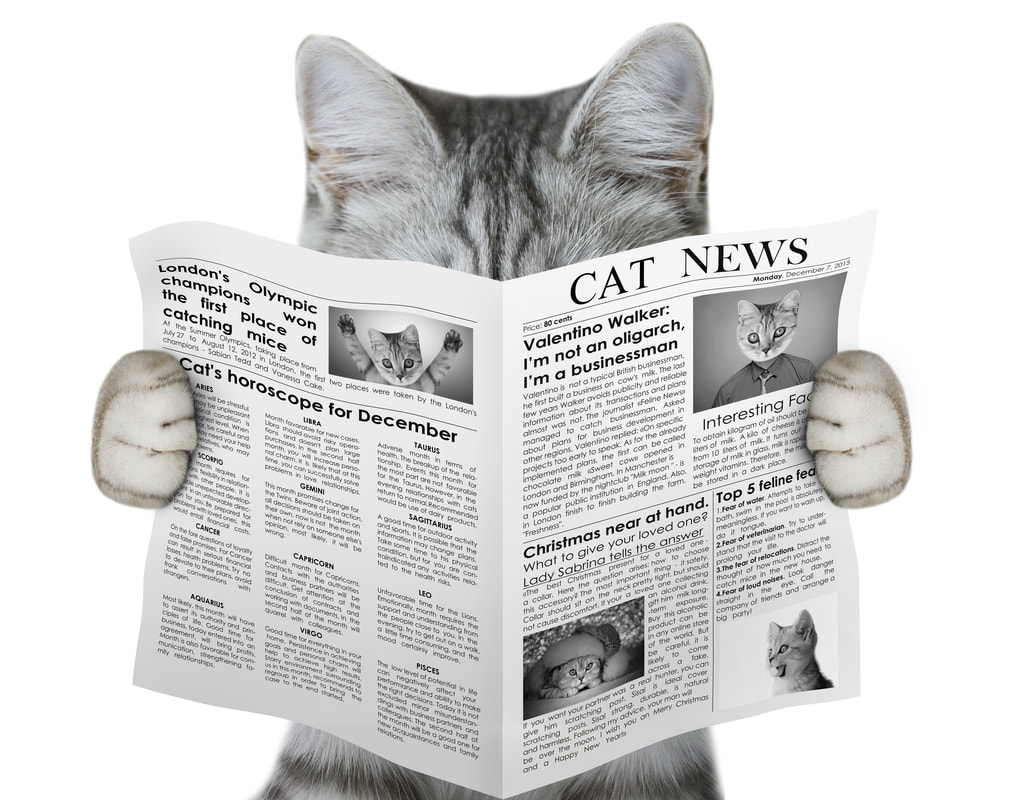








 RSS Feed
RSS Feed

























